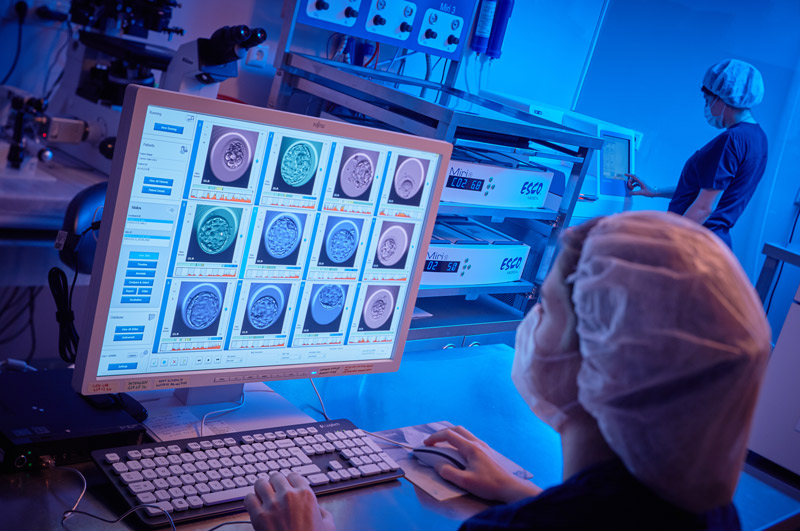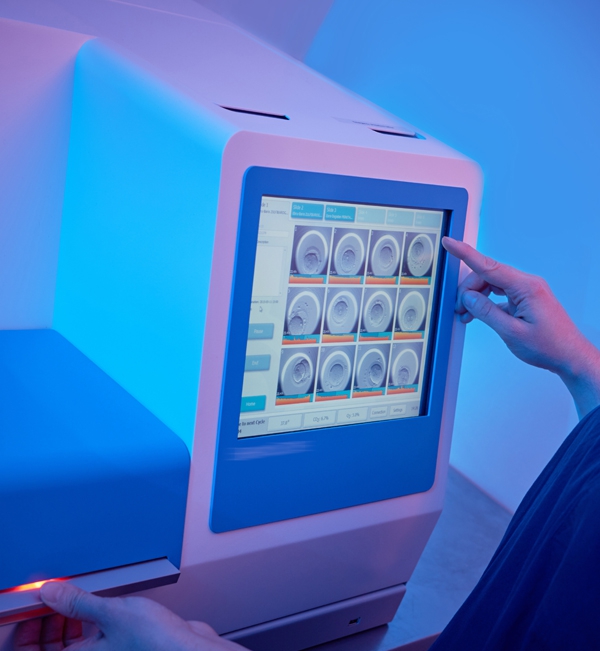Embryos are followed more closely by time-lapse incubators.
Eggs/embryos are kept (cultured) in special devices called incubators in an IVF laboratory. Following microinjection of an egg with an oocyte, the microinjected oocyte is transferred in a dish to an incubator. The morphological development of an embryo (cell number, fragmentation etc.), thereafter, is evaluated under microscopy at universally set time-points by taking the embryo out of the incubator. However, taking the embryo each time out of the incubator poses a stress to the embryo due to disturbed culture conditions; the ambient temperature in a classical lab is 23oC versus 37 oC in the incubator. Similarly the CO2 and O2 gas pressures are different inside and outside of an incubator. However, thanks to the time-lapse technology, which permits taking the pictures of embryos within the incubator every 10-15 minutes without giving any harm to the embryos. In other words, time-lapse technology permits undisturbed culture conditions, which avoids stress to the embryos.
Another advantage of time-lapse technology is that it permits continuous development of the embryo, rather than just giving static information at only several time-points. It has been clearly shown that transferring embryos with several division patterns are associated with very low pregnancy rats (e.g. direct division-division of 1 cell to 3 cells or 2 cell to 5 cells within less than 4 hours; reverse cleavage-e.g. 8-cell embryo developing to 7-cell by fusion of 2 cells). In other words, time-lapse technology permits us not to select those embryos (deselection). Obviously, deselection would not be possible with classical incubators.
Time-lapse technology is high technology and costly. In our embryology lab, we have 2 time-lapse incubators (Embryoscope). We should stress that the rest of all our incubators are modern small, bench-top incubators providing high quality in-vitro culture conditions. Although not critical, time-lapse technology offers some advantages including;
- Embryos stay stable in terms of the temperature, humidity, oxygen and carbon dioxide pressure.
- All embryonic development stages are closely followed.
- Not to select embryos (deselection) of embryos with abnormal cleavage (e.g. direct division-division of 1 cell to 3 cells or 2 cell to 5 cells within less than 4 hours; reverse cleavage-e.g. 8-cell embryo developing to 7-cell by fusion of 2 cells)

